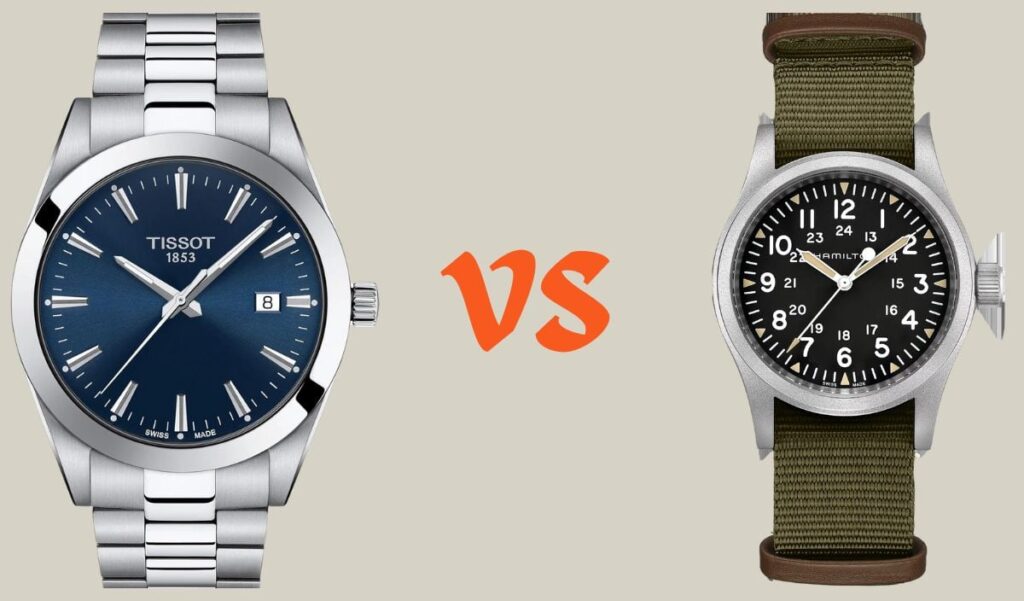For watch enthusiasts taking their first step into the world of Swiss timepieces, the battle between Tissot and Hamilton often emerges as a popular debate. Both brands deliver outstanding craftsmanship, Swiss heritage, and affordability—making them the go-to choices for those seeking to enter the realm of luxury watches without breaking the bank. But which brand stands out when it comes to value, design, heritage, and horological prowess?
Swiss Heritage and Brand Identity
Tissot, founded in 1853 in Le Locle, Switzerland, is a brand synonymous with innovation. As part of the Swatch Group, it has always embraced a wide array of styles—from classic dress watches to high-tech touch-screen models like the T-Touch. Known for its versatility and mainstream appeal, Tissot bridges traditional Swiss watchmaking with modern consumer demands.
Hamilton, though originally an American brand established in 1892, now operates from Biel, Switzerland, after becoming a Swatch Group member. While it maintains a strong American spirit in design and storytelling—particularly through its deep ties to aviation and cinema—it still benefits from the precision and reliability of Swiss manufacturing.
Design Language
Design is where personal taste plays a big role, but the two brands offer distinctly different aesthetics.
Tissot focuses more on variety and elegance. Models like the Le Locle, PRX, and Gentleman cater to those who love clean, polished, and classic designs. The PRX, in particular, has seen a resurgence thanks to its integrated bracelet design and retro 1970s appeal.
Hamilton, on the other hand, leans into heritage and adventure. Watches like the Khaki Field, Khaki Aviation, and Jazzmaster lines appeal to vintage lovers, military history buffs, and fans of rugged functionality. There’s a raw, utilitarian charm to many of Hamilton’s watches that stands out in a world of increasingly sleek and minimal designs.
Movements and Value
Both Tissot and Hamilton use movements from ETA, another Swatch Group company, ensuring quality and dependability. Tissot’s Powermatic 80 movement, offering an impressive 80-hour power reserve, has become a standout feature in its automatic lineup.
Hamilton also uses Powermatic variations (often branded H-10 or H-30), but often pairs them with more refined finishing or added complications like day/date functions or chronographs. Hamilton tends to lean a little more toward enthusiasts looking for mechanical depth, while Tissot balances performance with accessibility.
Pricing and Resale
In terms of pricing, both brands typically range between $400 to $1,200 USD, making them affordable compared to higher-tier Swiss brands. Tissot may slightly undercut Hamilton in some collections, offering better value for style-conscious buyers. However, Hamilton watches often retain better collector interest and resale value, especially models like the Khaki Field Mechanical, which have a cult following.
Tissot is ideal for those who want a stylish, versatile Swiss watch that looks at home in both casual and formal settings. Hamilton is perfect for those who value storytelling, rugged aesthetics, and a stronger mechanical presence. Either brand is a fantastic gateway into the world of Swiss watches—reliable, reputable, and rich in character.
